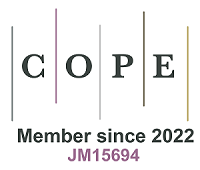From gains to liver pain: when exercise training goes too far
Abstract
A recent study from Liu et al. described the role of skeletal muscle-derived extracellular vesicles in promoting liver fibrosis as an outcome of chronic overtraining in mice. Here, we highlight this work and discuss its implications within the fields of exercise physiology and inter-organ communication.
Keywords
MAIN TEXT
Introduction
Due to increases in skeletal muscle metabolism and contraction during exercise, there has been a growing interest in understanding how the release of various factors from skeletal muscle tissue may influence other organs[1-3]. Recently, the release of skeletal muscle-derived extracellular vesicles (SMEVs) has emerged as a mechanism for inter-organ communication[3-7]. Previous research has suggested that SMEVs may contribute to the pleiotropic effect of exercise on whole-body health and exercise adaptations[1,2,8-12]. For example, exercise-stimulated release of SMEVs has been found to play a role in adipose tissue lipolysis and osteogenesis in bone. However, recent findings by Liu et al. reveal the unexpected negative effects of SMEVs on liver health in response to exercise overtraining[13].
Research summary
Liu et al. conducted an exercise training study where healthy participants were classified as either an “overtraining group” or “control group” based on their perceived exertion during a cycling training program[13]. Participants in the overtraining group had higher liver enzyme levels and liver fibrosis-related markers. To corroborate these findings, they subjected mice to 12 weeks of forced treadmill running, finding that overtraining, but not moderate exercise, led to liver fibrosis as determined by liver pro-fibrotic gene expression and histology. Mice with pre-existing liver conditions also had exacerbated outcomes with overtraining. These data suggest that overtraining can lead to liver damage in both humans and mice.
Mechanistically, the authors found overtraining caused an accumulation of lactate in skeletal muscle, which, upon release into circulation, induced liver fibrosis. Through a series of elegant rescue experiments,
To determine how lactate influences SMEVs to promote liver damage, Liu et al. performed proteomics on SMEVs isolated from control- and lactate-treated C2C12 myotubes, finding that F-box protein 2 (FBXO2) was enriched following lactate treatment[13]. The silencing of Fbxo2 alleviated the pro-apoptotic effects elicited by SMEVs isolated from lactate-treated myotubes on hepatocytes. Through immunoprecipitation-mass spectrometry technology, the authors identified SH3 domain-containing 3 (SORBS3) as a key protein interacting with FBXO2. In response to lactate treatment, SORBS3 was shown to undergo lactylation, leading to its liquid-liquid phase separation and, subsequently, the selective sorting of the SORBS3-FBOX2 complex into SMEVs. To confirm these findings, the authors subjected skeletal muscle-specific SORBS3-deficient mice to overtraining and found a significant reduction in FBXO2+ SMEV release and attenuation of liver fibrosis. The skeletal muscle-specific knockdown of FBOX2 similarly reduced both FBXO2+ SMEV release and liver damage. Furthermore, treatment of wild-type mice with either FBXO2- or FBXO2+ SMEVs demonstrated that only FBXO2+ SMEVs induced hepatic fibrosis.
Finally, the authors determined that these FBXO2+ SMEVs act by reducing the expression of myeloid cell leukemia-1 (MCL1), an anti-apoptotic factor and binding partner of FBXO2. By downregulating MCL1, FBXO2+ SMEVs led to increased apoptotic factors and subsequent apoptosis in hepatocytes. Conversely, overexpression of MCL1 in the liver protected against the pro-apoptotic effects of FBXO2+ SMEV treatment, further confirming the role of MCL1 in FBXO2+ SMEV-mediated hepatic fibrosis.
Limitations and conclusions
There are some important limitations that should be taken into consideration when interpreting the findings of the study. First, any attempt to replicate human exercise in mice is imperfect. While murine models of exercise are necessary and admittedly useful for discovery[14,15], their translatability is limited. Although overly strenuous exercise has been previously linked to liver damage in humans[16,17], it remains to be determined whether the precise mechanisms presented in this study are conserved in humans. There is alternative cargo carried in SMEVs, such as microRNAs, which may influence hepatic metabolism and be implicated in liver health[18], and therefore, the proposed mechanism may not be exclusive. It would be of great interest to know if athletes such as triathletes or cross-fit athletes, who are highly susceptible to overtraining given their high-volume training, show a higher incidence of liver damage. Alternatively, the proposed mechanism might not apply to highly trained athletes due to training-induced adaptations that provide some form of protection against liver damage. Although the authors show data suggesting that overtraining in humans may lead to liver damage, caution is necessary given how overtraining was assessed through indirect metrics (i.e., self-reported total metabolic equivalent, self-reported participant exertion) and that some markers used in the present study (i.e., AST) may be indicative of muscle injury rather than liver damage[16]. Therefore, it remains to be seen how effectively the mechanisms described in this paper can be corroborated in humans.
Through this work, Liu et al. establish a possible downside to exercise-stimulated inter-organ communication in the context of overtraining[13]. Notably, overtraining has previously been shown to result in other negative effects on skeletal muscle metabolism[19]. While recent studies have explored the positive effects SMEVs can have on other organs[1,2,8-12], EVs were originally thought to be a mechanism of waste disposal[20]. Although strenuous exercise is largely beneficial to health and longevity and should be universally encouraged, the present study does well to remind us that, while EVs certainly mediate many important functions critical to health, we must consider and explore the potential disadvantages of tissue crosstalk.
DECLARATIONS
Authors’ contributions
Conceived, drafted, edited, and approved the manuscript: Burke BI, McCarthy JJ, Ismaeel A
Availability of data and materials
Not applicable.
Financial support and sponsorship
None.
Conflicts of interest
All authors declared that there are no conflicts of interest.
Ethical approval and consent to participate
Not applicable.
Consent for publication
Not applicable.
Copyright
© The Author(s) 2025.
REFERENCES
1. Vechetti IJ Jr, Peck BD, Wen Y, et al. Mechanical overload-induced muscle-derived extracellular vesicles promote adipose tissue lipolysis. FASEB J. 2021;35:e21644.
2. Burke BI, Ismaeel A, Long DE, et al. Extracellular vesicle transfer of miR-1 to adipose tissue modifies lipolytic pathways following resistance exercise. JCI Insight. 2024;9:e182589.
3. McIlvenna LC, Parker HJ, Seabright AP, et al. Single vesicle analysis reveals the release of tetraspanin positive extracellular vesicles into circulation with high intensity intermittent exercise. J Physiol. 2023;601:5093-106.
4. Whitham M, Parker BL, Friedrichsen M, et al. Extracellular vesicles provide a means for tissue crosstalk during exercise. Cell Metab. 2018;27:237-51.e4.
5. Brahmer A, Neuberger E, Esch-Heisser L, et al. Platelets, endothelial cells and leukocytes contribute to the exercise-triggered release of extracellular vesicles into the circulation. J Extracell Vesicles. 2019;8:1615820.
6. Oliveira GP Jr, Porto WF, Palu CC, et al. Effects of acute aerobic exercise on rats serum extracellular vesicles diameter, concentration and small RNAs content. Front Physiol. 2018;9:532.
7. Guescini M, Canonico B, Lucertini F, et al. Muscle releases alpha-sarcoglycan positive extracellular vesicles carrying miRNAs in the bloodstream. PLoS One. 2015;10:e0125094.
8. Bei Y, Xu T, Lv D, et al. Exercise-induced circulating extracellular vesicles protect against cardiac ischemia-reperfusion injury. Basic Res Cardiol. 2017;112:38.
9. Conkright WR, Kargl CK, Hubal MJ, et al. Acute resistance exercise modifies extracellular vesicle miRNAs targeting anabolic gene pathways: a prospective cohort study. Med Sci Sports Exerc. 2024;56:1225-32.
10. Vechetti IJ Jr, Valentino T, Mobley CB, McCarthy JJ. The role of extracellular vesicles in skeletal muscle and systematic adaptation to exercise. J Physiol. 2021;599:845-61.
11. Wang Y, Liu Y, Zhang S, et al. Exercise improves metabolism and alleviates atherosclerosis via muscle-derived extracellular vesicles. Aging Dis. 2023;14:952-65.
12. Ma S, Xing X, Huang H, et al. Skeletal muscle-derived extracellular vesicles transport glycolytic enzymes to mediate muscle-to-bone crosstalk. Cell Metab. 2023;35:2028-43.e7.
13. Liu Y, Zhou R, Guo Y, et al. Muscle-derived small extracellular vesicles induce liver fibrosis during overtraining. Cell Metab. 2025;37:824-41.e8.
14. Burke BI, Ismaeel A, McCarthy JJ. The utility of the rodent synergist ablation model in identifying molecular and cellular mechanisms of skeletal muscle hypertrophy. Am J Physiol Cell Physiol. 2024;327:C601-6.
15. Burke BI, Ismaeel A, von Walden F, Murach KA, McCarthy JJ. Skeletal muscle hypertrophy: cell growth is cell growth. Am J Physiol Cell Physiol. 2024;327:C614-8.
16. Braschler L, Nikolaidis PT, Thuany M, et al. Physiology and pathophysiology of marathon running: a narrative review. Sports Med Open. 2025;11:10.
17. Mieszkowski J, Stankiewicz BE, Kochanowicz A, et al. Remote ischemic preconditioning reduces marathon-induced oxidative stress and decreases liver and heart injury markers in the serum. Front Physiol. 2021;12:731889.
18. Castaño C, Mirasierra M, Vallejo M, Novials A, Párrizas M. Delivery of muscle-derived exosomal miRNAs induced by HIIT improves insulin sensitivity through down-regulation of hepatic FoxO1 in mice. Proc Natl Acad Sci U S A. 2020;117:30335-43.
19. Flockhart M, Nilsson LC, Tais S, Ekblom B, Apró W, Larsen FJ. Excessive exercise training causes mitochondrial functional impairment and decreases glucose tolerance in healthy volunteers. Cell Metab. 2021;33:957-70.e6.
Cite This Article
How to Cite
Download Citation
Export Citation File:
Type of Import
Tips on Downloading Citation
Citation Manager File Format
Type of Import
Direct Import: When the Direct Import option is selected (the default state), a dialogue box will give you the option to Save or Open the downloaded citation data. Choosing Open will either launch your citation manager or give you a choice of applications with which to use the metadata. The Save option saves the file locally for later use.
Indirect Import: When the Indirect Import option is selected, the metadata is displayed and may be copied and pasted as needed.
About This Article
Copyright
Data & Comments
Data



















Comments
Comments must be written in English. Spam, offensive content, impersonation, and private information will not be permitted. If any comment is reported and identified as inappropriate content by OAE staff, the comment will be removed without notice. If you have any queries or need any help, please contact us at [email protected].